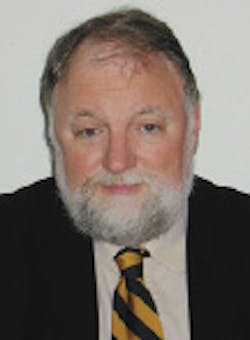NASEM supports gulf studies
The National Academies of Science, Engineering & Medicine awarded grants totaling $10.8 million to six projects conducting research aimed at improving systemic risks at oil and gas operations in the Gulf of Mexico.
Nick Snow
Washington Editor
"These projects address several facets of risk in offshore operations," said Kelly Oskvig, program officer for the Safer Offshore Energy Systems initiative at the Academies' Gulf Research Program (GRP).
"This includes research on the problem of gas unloading within deepwater drilling risers, development of remote detection capabilities of hydrocarbon releases, design of improved cementing mixtures and better techniques for sealing wells, and development of tools to assist team decision-making in the offshore environment," Oskvig said early last month when the awards were announced.
The GRP was founded in 2013 as part of legal settlements with companies involved in the Macondo deepwater well blowout and crude oil spill into the gulf 2 years earlier. Its efforts bring NASEM's rigorous scientific discipline to research free of outside political influences in this offshore oil and gas region.
The single largest award-more than $4.9 million-will go to Louisiana State University for its proposed experiments on multiphase flow of live muds in a full-scale wellbore with distributed sensing for kick and gas-in-riser detection and mitigation. Texas A&M University and Weatherford International also are participating in the study.
Other LSU researchers will receive more than $2.6 million to develop and test new materials to improve prevention of wellbore leaks during plugging and abandonment of offshore wells. Norway's SINTEF offshore research institute, the University of Pittsburgh, and the University of Texas at Austin also are participating.
Another $1.2 million was designated for a University of Houston team, where researchers will work with Mulberry Well Systems LLC to better understand riser gas formation and unloading through development of modeling describing riser gas dynamics under different situations and operating conditions and assess instrumentation which could be used to detect its properties and behavior.
Additional inquiries
Oklahoma State University researchers will receive $671,000 to study advanced cement characterization and modeling to evaluate novel additives to improve wellbore integrity. Two other grants went to projects examining ways to detect, locate, and characterize hydrocarbon leaks, and developing tools to identify issues and situations which could interfere with offshore workers making the right decisions in unusually high-stress situations.
The GRP has $500 million to use over 30 years for grants, fellowships, and other activities aimed at making offshore energy systems safer and protecting human health and the environment by catalyzing advances in science, practice, and capacity to generate long-term benefits for the Gulf of Mexico region and the nation, NASEM said.

